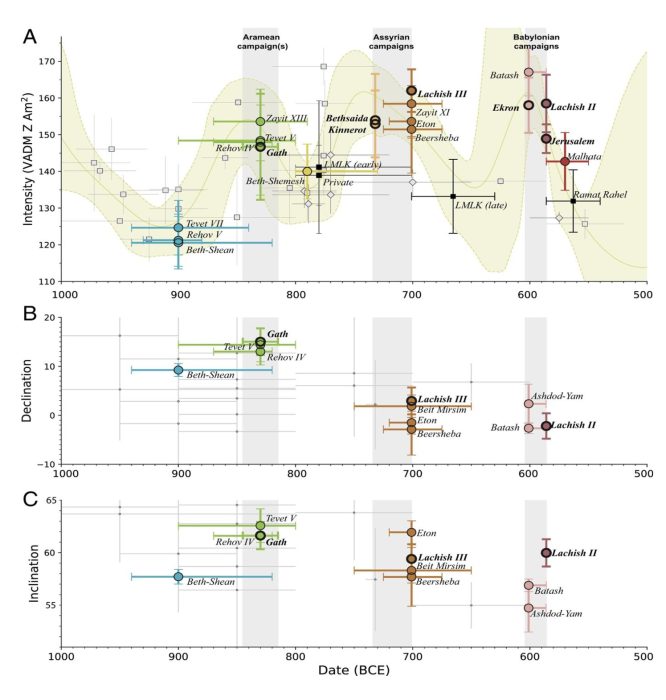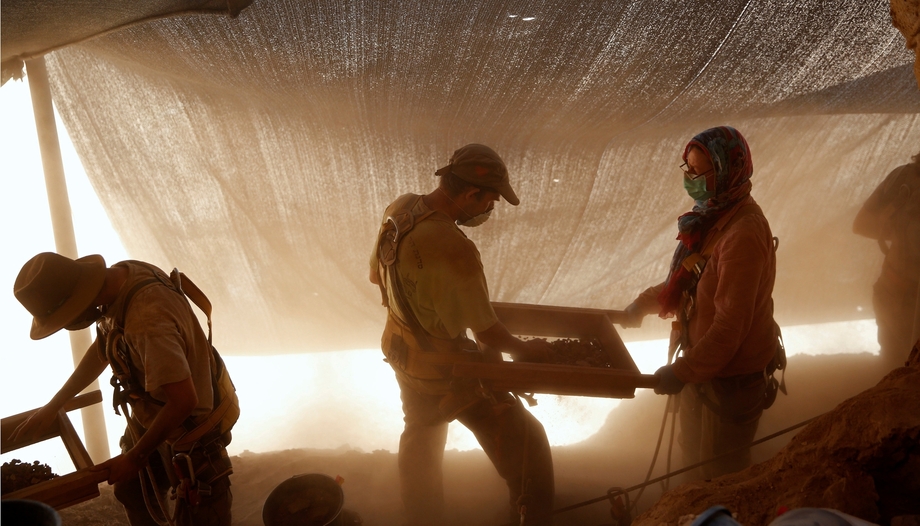I found interesting the recent study published in the scientific journal PLOS ONE: Application of thermal demagnetization to archaeological materialswhich makes it possible to reconstruct ancient events in greater detail. This advance is based on the magnetic remanencewhich allows certain materials (such as iron oxide) to retain the magnetism acquired under certain circumstances. This phenomenon is used to date materials chronologically, determine the temperatures experienced and understand the circumstances of their magnetization. For example, in the construction of houses or walls, bricks are laid randomly, but once laid, if a fire occurs, the heating and cooling of the bricks gives rise to a strong, unified magnetic signal of ferrous particles, in the direction of the field at that historical moment, which is similar to the average direction of the geomagnetic field in the region.
As the Earth's magnetic field changes over time, it is essential to establish a chronological map of the geomagnetic field changes in a region. In this sense, studies such as the one carried out by a team of researchers from the United States, the United Kingdom and Israel are important: "The Earth's magnetic field changes over time.Exploring geomagnetic variations in ancient Mesopotamia: A study. archaeomagnetic of inscribed bricks from the 3rd and 1st millennia B.C." in the journal Proceedings of the National Academy of Sciences.. They have examined iron oxide granules in 32 bricks, each inscribed with the names of 12 Mesopotamian kings. The results made it possible to reconstruct a baseline for the earth's magnetic field during the reign of these rulers. The archaeomagnetic baseline established in the study is proving useful for dating other objects that until now could not be adequately dated.

In this regard, the aforementioned study: Application of thermal demagnetization to archaeological materialssThe authors of the study, Tel Aviv University, Hebrew University of Jerusalem, Bar-Ilan University and Ariel University, have analyzed a burnt brick wall in the city of Gath, mentioned in the biblical text of 2 Kings 12:18. The authors of the study, from Tel Aviv University, the Hebrew University of Jerusalem, Bar-Ilan University and Ariel University, using this technique have been able to confirm the historicity of the biblical account and provide additional details about the event.. The uniform orientation of the magnetic fields in the burned bricks indicates that they burned and cooled in the same place, supporting the biblical narrative about the destruction of Gath. This breakthrough definitively refutes the contentions of some scholars about the historicity or nature of the burned bricks in the area.
In the Bible and other ancient Near Eastern texts describe many military campaigns against the kingdoms of Israel and Judah during the 10th to 6th centuries BC, such as the Aramaic, Assyrian and Babylonian military campaigns that left behind layers of destruction known from archaeological excavations. However, only a few layers of destruction are securely associated with specific historical campaigns, thanks to the combination of historical and archaeological data. But the attribution of many other layers of destruction are subject to debate, and pose challenges in reconstructing the chronological scale and geographic scope of the campaigns.
For this reason, studies such as the Six centuries of geomagnetic intensity variations recorded by Judean royal stamped jar handlesor the very interesting and recent work on the Reconstruction of biblical military campaigns using geomagnetic field data.The results of these studies, which are achieving an accurate dating for many of these uncertain events, are being of great help in reaching agreements between historical data and archaeology, and which, in turn, are giving reliability to the biblical account.
This is a new tool that could be very interesting for biblical historical dating. We will remain attentive to new contributions.
Doctor of Canon Law









